
Fremont Street
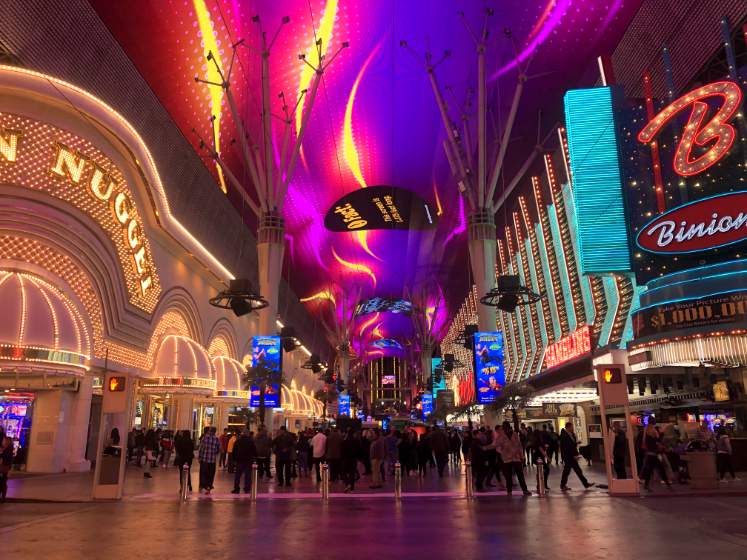
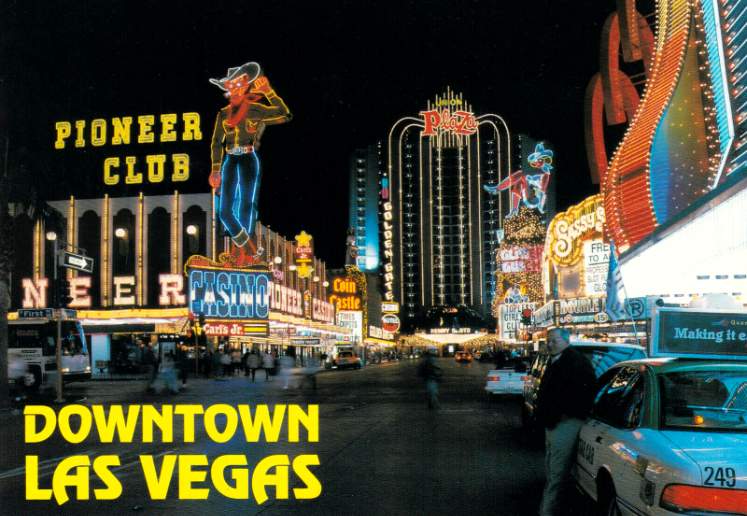
Fremont Street before the construction of the Fremont Street Experience Canopy. Permanently closed to vehicular traffic on September 7, 1994.
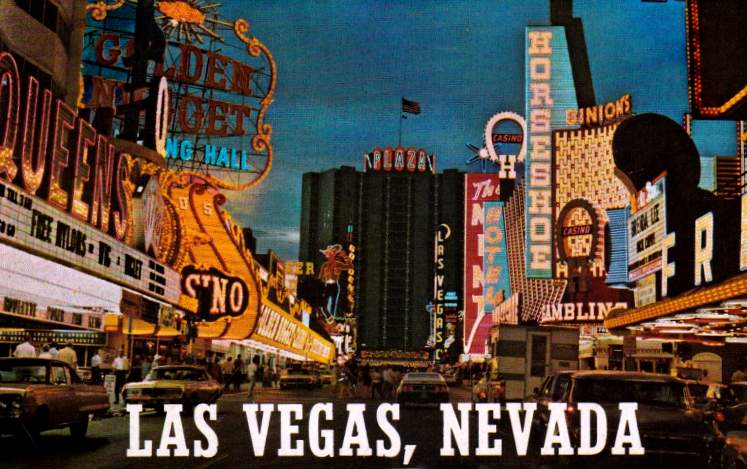
Fremont Street in the 1970s. Structures currently existing from this photo: Four Queens Hotel and Casino, Golden Nugget Las Vegas, Pioneer Club Las Vegas, Golden Gate Hotel & Casino, Plaza Hotel and Casino, Binion's Gambling Hall and Hotel, Fremont Hotel & Casino.
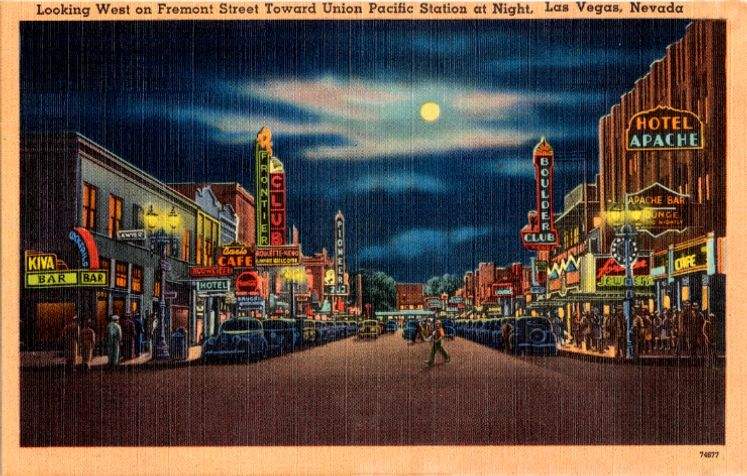
At the intersection of current-day Fremont Street and Casino Center Boulevard looking west. Hotel Apache currently exists as Binion's Gambling Hall and Hotel.
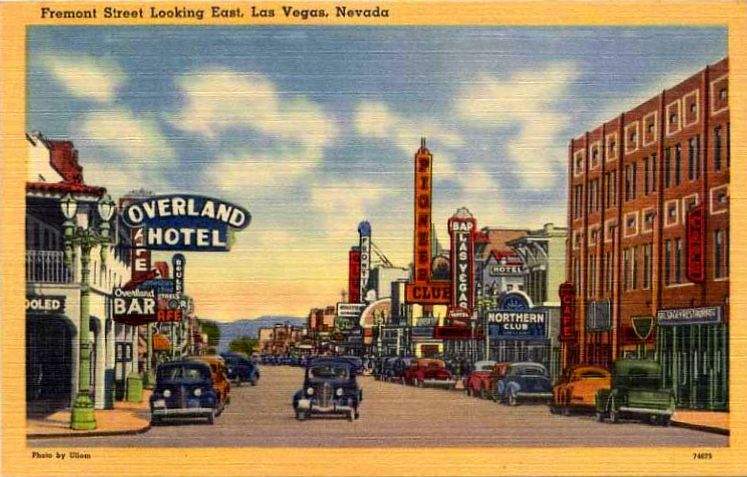
To the right of the picture is the Hotel Nevada what currently exists as the Golden Gate Hotel & Casino. The Pioneer Club currently exists as a gift shop.
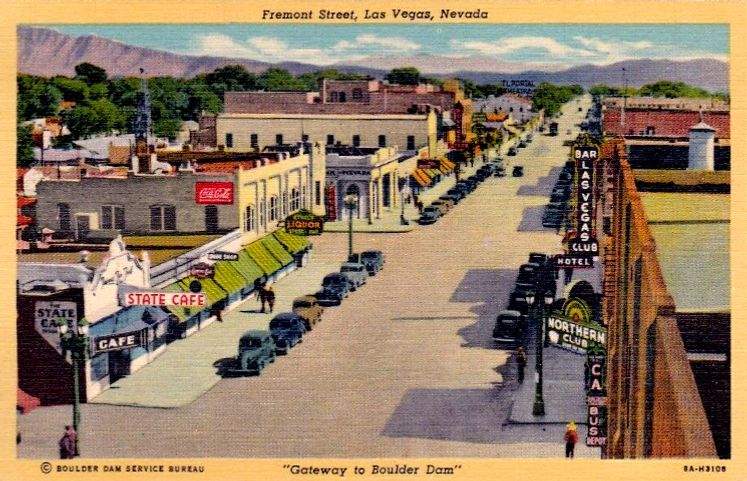
At the Intersection of Fremont Street and 1st Street looking east. At the end of the road and on the left side of the street is the existing El Portal Theatre. The building is white and has a blue sign.
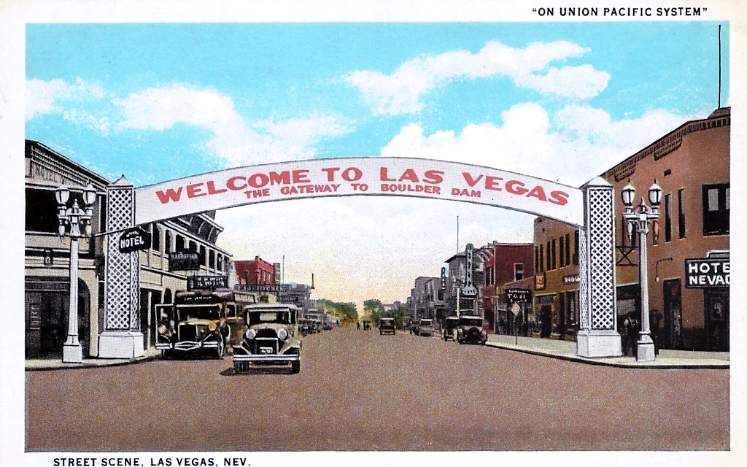
At the intersection of Main Street and Fremont Street looking east. To the right of the picture is the Hotel Nevada what currently exists as the Golden Gate Hotel & Casino.
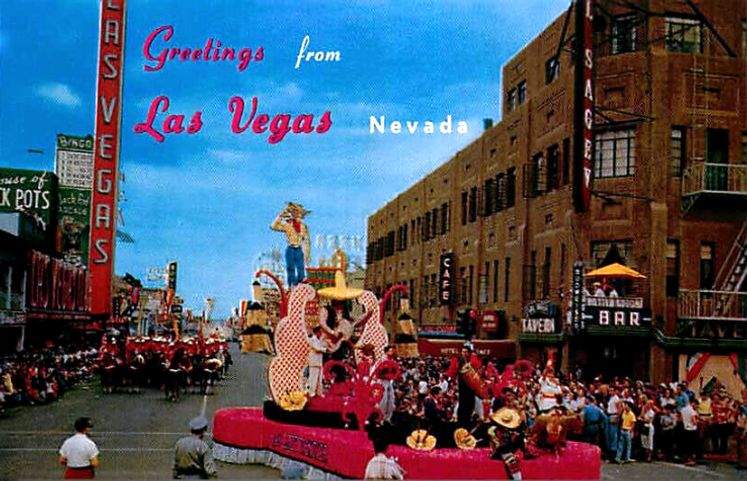
The original Helldorado event started in 1935 and ended in 1997.
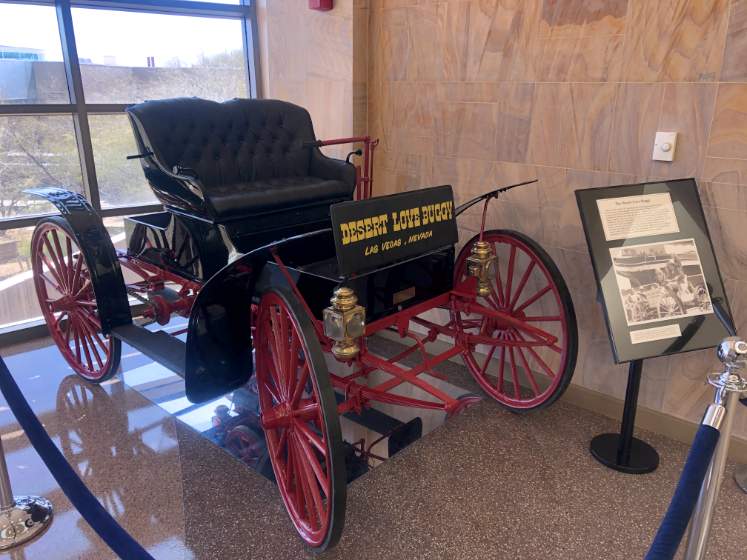
The 1911 Sears Model K. made its first appearance at the Helldorado parade in 1939. It's final appearance was on September 7, 1994, during the closing of Fremont Street to vehicular traffic.
Clark's Las Vegas Townsite
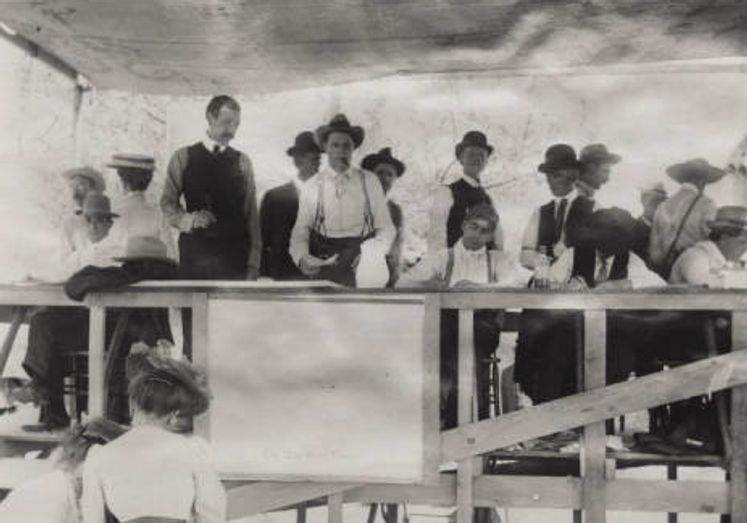
Photograph of people gathered at the Las Vegas Townsite auction, 1905. Ferron-Bracken Photo Collection. UNLV Libraries Special Collections & Archives.
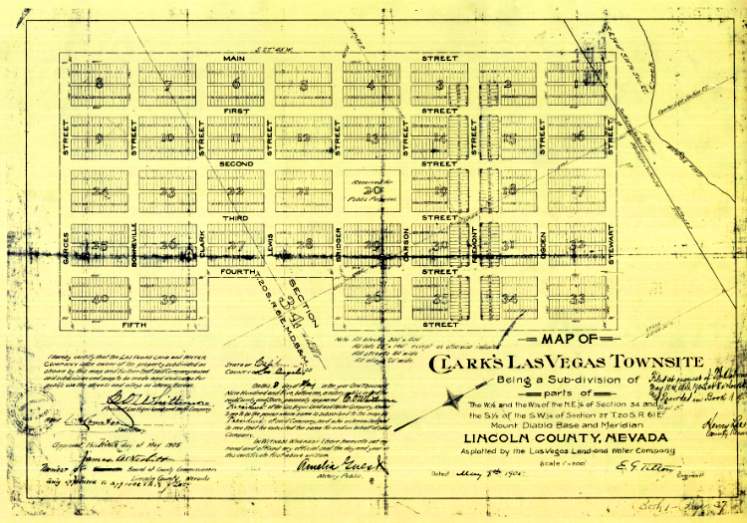
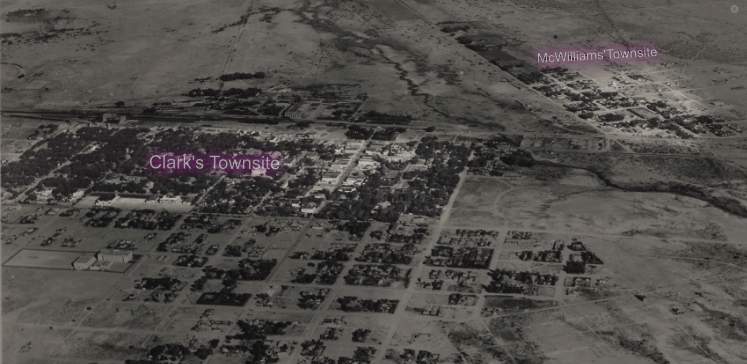
Aerial photograph of Las Vegas looking west, 1930. Ray Cutright Collection. UNLV Libraries Special Collections & Archives. Cropping and text layers added to original by The Historic Las Vegas Project.
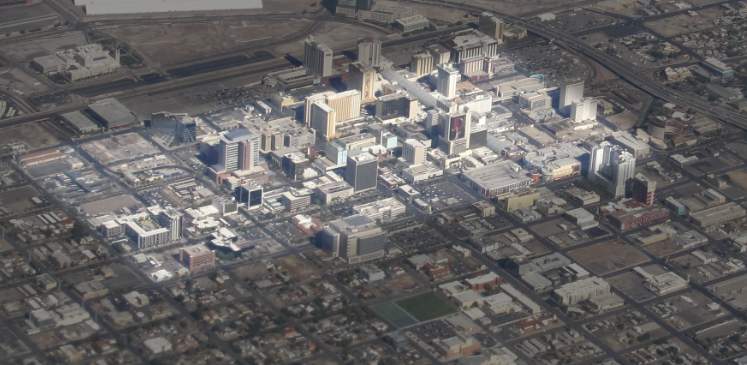
This work, "Clark's Las Vegas Townsite", is a derivative of "Downtown Las Vegas, Nevada" by Ken Lund, used under CC BY-SA 2.0.
"Clark's Las Vegas Townsite" is licensed under CC BY-SA 2.0 by The Historic Las Vegas Project.
"Standing on Fremont Street today, it's hard to visualize the canvas tents with hand-painted wooden signs that lined this dusty street and served as hotels, saloons, shops and banks in the early 1900's. During the transition from a frontier town to a neon-lined gambling extravaganza, Fremont Street, named after explorer John C. Fremont, has remained at the heart of downtown Las Vegas. For many decades, Fremont Street was where residents shopped, teenagers cruised, and tourist played.
Early on, canvas tents were replaced with wood, brick, and concrete block buildings in the Romanesque, Victorian and Greek Revival styles. Like a typical western town, wide arcades and broad canopies with carved balustrades extended from high false fronts over the boardwalk. Corner buildings had angled entrances to take advantage of the busy intersection. The most historic survivor of the era is Golden Gate Hotel & Casino (then Hotel Nevada), which open in 1906 at One Fremont Street. The hotel was built using concrete as the primary building material by John F, Miller, who bid successfully on the corner lot at the 1905 land auction that created the new town of Las Vegas.
The sudden influx of tourism triggered by the construction of Hoover Dam and the legalization of gambling in the early 1930s fit perfectly with a "Wild West" theme that Las Vegas promoted, attracting thousands of visitors. Soon "sawdust joints" with wooden swinging or sliding glass doors replaced most of the smaller businesses along Fremont Street. Businesses had names like The Frontier Club and Hotel Apache, with signs rising above the rooftops with ornate western lettering and bright contrasting neon colors.
During the 1940s, Fremont Street exploded with neon as signs became larger and more innovatively arranged, battling to catch the consumer's eye. Modern streamline styles appeared in sign design and many casinos featured lighted overhead canopies and large, rounded, ever-flashing bull nose corners. The height of signs kept increasing, with the famous Las Vegas Club sign rising 120 feet above the sidewalk. Open frame signs appeared on rooftops, and combined with large marquees, they created neon "wraps" that covered the entire building façade with dazzling light. The most spectacular "wrap" was created at the Golden Nugget in 1956.
In the 1950s and 1960s the introduction of high-rise towers forever changed the scale of Fremont Street. Casinos expanded, absorbing neighboring businesses, exemplified by the Horseshoe Club's takeover of Boulder Club and later the Mint. Wild West imagery remained popular, personified by the 1951 "Vegas Vic" sign, which waved at visitors with a friendly "Howdy Podner" from atop the Pioneer Club.
Due to its roots of spectacular lights, the biggest big-screen on the planet, Viva Vision, dazzles over 25,000 visitors nightly with free light and sound shows, and has become the signature attraction of the Fremont Street Experience. This canopy was built in 1995 and contains over 12 million LED lights and has a 550,000-watt sound system. Even with all these profound changes over the last 100 years, much of the history of Las Vegas still exists under the layers of neon on Fremont Street."
(Las Vegas Centennial Commission)
"Neon lighting, introduced in Paris in 1910, offered a brilliant, and efficient, alternative to the incandescent light bulb. In the United States, neon's popularity soared, used to advertise motels, restaurants, theatres, and it even appeared on the Goodyear Blimp. The spectacular signs of Broadway's "Great White Way" became the ultimate neon display. Then, just as quickly, its popularity faded. After World War II, skilled neon craftsmen retired and were not replaced; less expensive, mass-produced plastic signs became common. As the use of neon declined around the country, it found a new, unexpected life in Las Vegas. The first neon sign in Las Vegas was built in 1929, probably for the Oasis Café at 123 Fremont Street. The 1940s and 1950s saw the birth of the Las Vegas Strip and "Glitter Gulch" downtown. The hotels raced each other for the biggest, tallest, and brightest casino sign.
Las Vegas wanted to project an image of lights, glamour, and excitement, and neon played a large role in creating that image. The signs dwarf the very buildings they are advertising; at night in Las Vegas, the signs themselves become the architecture. Neon has gaiety, joy, and pageantry. The canvas is the night."
(Las Vegas Centennial Commission)
"At this site [Main Street and Fremont Street] on May 15th 1905, the San Pedro, Los Angeles & Salt Lake Railroad auctioned off lots for the creation of the new city of Las Vegas. With 110 degree temperatures scorching the crowds, about three thousand people gathered to bid on the prime lots, many of which sold for up to $1,750 each. Instantaneously, a tent city sprang to life, and soon permanent buildings marked the emergence of the new city. Las Vegas began its life as a railroad town."
(Las Vegas Centennial Commission)
"Las Vegas was established as a railroad town in 1905; at the head of Fremont Street, the Mission-style depot represented the railroad's dominance over the economic and social life of the town for several decades. The streets of downtown were laid out parallel to the railroad tracks and not on a North/South grid. The building of Hoover Dam in the 1930s and the rise of the gambling industry in the 1940s and 1950s fueled spectacular growth in the Las Vegas Valley. With the growth came the loss of many of the town's early buildings. Some important buildings that have been lost include the Clark County Courthouse on Second Street (now Casino Center Boulevard), the ice plant on Main Street and the hospital on Eighth and Ogden. Historic preservation efforts have been successful for several properties, including the 5th Street School, the Las Vegas High School, the Old Mormon Fort and the Post Office and Federal Building. The preservation of Las Vegas' early buildings offers us a rare glimpse of our past in this rapidly changing city."
(Las Vegas Centennial Commission)
"Anticipating the end of Hoover Dam construction and the workers that it brought to town, Las Vegas sought other means for economic prosperity. In 1935, led by the Las Vegas Elks Club, the first Helldorado celebration took place. This event became a four-day celebration, taking place every May. Helldorado featured parades down Fremont Street, rodeos, carnivals, frontier-style clothing, beard-growing contest, and a "Kangaroo Kourt". Helldorado created a "Wild West" atmosphere for Las Vegas and was one of the very first special events aimed at attracting tourist. Helldorado was made popular in the movies, when the 1946 Roy Rogers film Heldorado premiered. Movie censors insisted Heldorado be spelled with one "l". For Las Vegas residents, Helldorado was a source of civic pride and an annual rite of spring. Generations of school children joined the parades and floats, as they enjoyed time off from school. Ending in the mid-1990s, Helldorado was the longest running civic celebration in Las Vegas history."
(Las Vegas Centennial Commission)
Located on Fremont Street from Main Street to Las Vegas Boulevard.